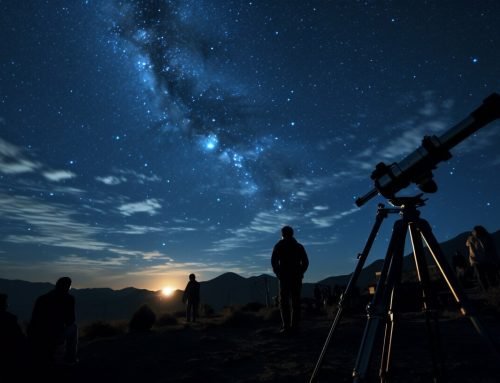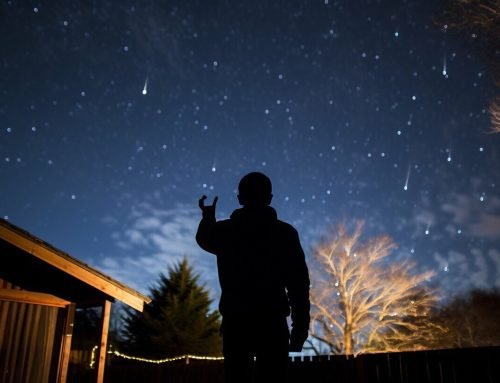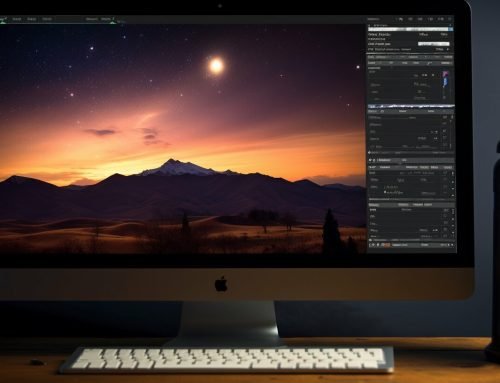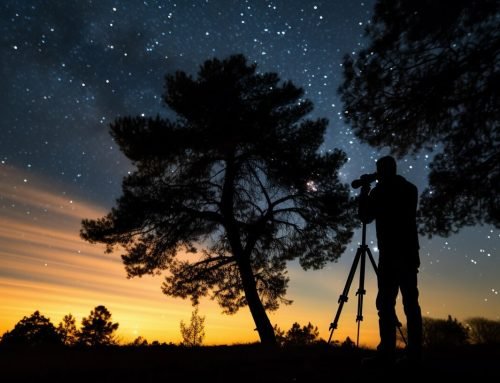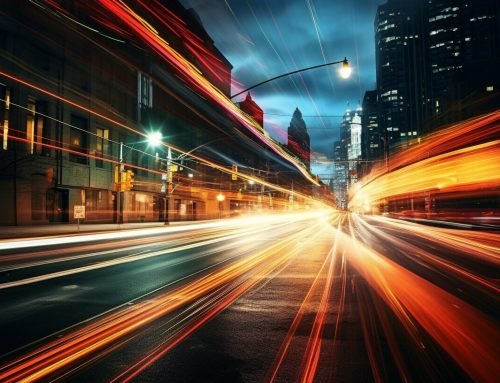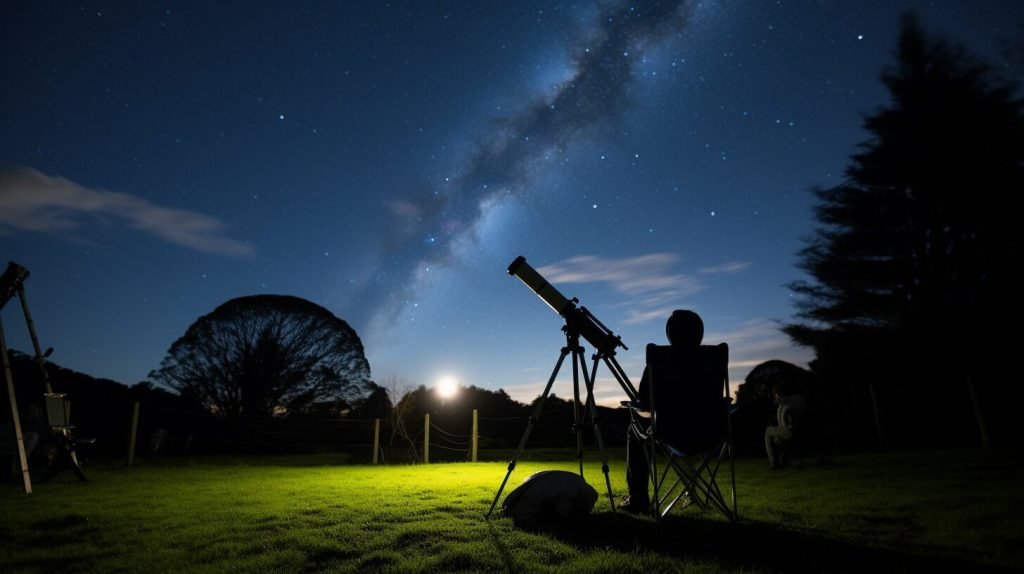
Are you ready to explore the breathtaking beauty of the night sky? With astrophotography, you can capture stunning images of stars, planets, and galaxies that are out of this world. Whether you’re a beginner or an experienced photographer, this guide will provide you with the essential tips, techniques, equipment, and camera settings needed to embark on your astrophotography journey.
Key Takeaways:
- Astrophotography allows you to capture the beauty of the universe through stunning images.
- This beginner’s guide will provide essential tips, techniques, equipment, and camera settings.
- Whether you’re a beginner or experienced, astrophotography is an exciting and rewarding hobby.
- Must-have equipment for astrophotography includes camera gear, telescopes, and tripods.
- Mastering techniques such as long-exposure photography and composition can enhance your astrophotography skills.
Getting Started with Astrophotography
Are you ready to embark on an exciting journey of astrophotography? Capturing the beautiful night sky can be a rewarding experience, but it all starts with the basics of night sky photography.
Understanding Astrophotography
Astrophotography involves capturing images of the night sky, including stars, planets, and galaxies. It requires a camera that has manual exposure and focus control, making it a popular hobby for photographers and astronomy enthusiasts.
Tips for Beginners
As a beginner, it’s essential to start with the right equipment and techniques. A sturdy tripod, wide-angle lens, and a remote shutter release are all essential tools to begin capturing the night sky. Also, make sure to shoot in RAW format, which will allow you to adjust the exposure and color settings in post-processing.
Additionally, it’s important to choose a dark location with minimal light pollution for optimal star visibility.
Camera Settings for Night Sky Photography
When it comes to camera settings, start with the following:
- ISO: 1600-3200
- Aperture: f/2.8-f/4
- Exposure Time: 15-30 seconds
Experiment with these settings and adjust according to the lighting conditions and subject matter.
Remember, practice makes perfect. Don’t be discouraged if your first attempts don’t turn out as expected; keep experimenting and learning from your mistakes.
With these tips and techniques, you can start your astrophotography journey. Whether you’re capturing the constellations, the Milky Way, or beyond, the night sky is full of wonders waiting to be discovered through the lens of your camera.
Essential Equipment for Astrophotography
Regarding astrophotography, having the right equipment is vital to capturing stunning images of the night sky. Here are the must-have tools you’ll need:
Camera Gear
Your camera is the heart of astrophotography. For the best results, you need a camera with manual controls and a wide-angle lens. A full-frame camera is ideal, but a crop-sensor camera will also work, although it may require longer exposure times to capture sufficient detail.
Additionally, a sturdy tripod is necessary to keep your camera steady during long exposures. A remote shutter release or intervalometer is also handy to prevent camera shake when pressing the shutter button.
Telescopes
If you want to take your astrophotography to the next level, a telescope can help you capture stunning images of galaxies, nebulas, and other deep-space objects. A good telescope can also help you see details that are invisible to the naked eye and provide a closer look at the moon and planets.
There are two types of telescopes to consider: Refractors and reflectors. Refractors use lenses to focus light, while reflectors use mirrors. Reflectors are typically more affordable and offer larger apertures, making them great for deep-sky photography.
Accessories
In addition to a camera and telescope, there are other essential accessories to consider. First and foremost, a red light flashlight is necessary for navigating in the dark without disturbing your eyes’ adaptation to low light. Secondly, a dew shield or heater is crucial for preventing dew buildup on your camera lens or telescope.
A battery pack or power bank, extra camera batteries, and memory cards are also necessary to ensure you have enough power and storage for your astrophotography session.
Conclusion on Astrophotography Equipment
With the right equipment, you can capture incredible images of the night sky. Whether you’re using a camera, telescope, or both, investing in the right tools will help you get the most out of your astrophotography experience.
- Camera with manual controls and wide-angle lens
- Sturdy tripod
- Remote shutter release or intervalometer
- Telescope – Refractor or reflector
- Red light flashlight
- Dew shield or heater
- Battery pack or power bank, extra batteries, and memory cards
Mastering Astrophotography Techniques
Now that you have the essential equipment and camera settings down, it’s time to explore the best astrophotography techniques to capture breathtaking images of the night sky.
Long Exposure Photography
Long-exposure photography is an essential technique for capturing star trails and other celestial events. To achieve stunning images, you’ll need to use a tripod to keep your camera steady and prevent any blurriness. Set your camera to manual mode and adjust the shutter speed to at least 20 seconds. A wide aperture of f/2.8 or lower is recommended to allow as much light as possible to enter your camera. Experiment with different shutter speeds and exposure times to achieve the desired effect.
Milky Way Photography
Capturing the Milky Way is a dream for many astrophotography enthusiasts. To get started, head out to a location with minimal light pollution and wait for a clear night. Use a wide-angle lens and a tripod to keep your camera steady. Set your camera to manual mode and adjust the aperture to the widest setting (f/2.8 or lower) and your shutter speed to around 20-25 seconds. Experiment with different exposure times and ISO settings until you find the perfect balance.
When composing your image, aim to include interesting foreground elements such as trees or buildings to add depth and interest to your photo.
Composition Tips and Tricks
Composition is key to creating stunning astrophotography images. Consider using the rule of thirds to create a balanced and visually appealing photo. Experiment with different angles and perspectives to add interest to your image. Try incorporating elements of the foreground with the night sky to create a sense of depth and scale.
Remember to always be patient and embrace the trial and error process. With practice and experimentation, you’ll soon be on your way to mastering the art of astrophotography.
Conclusion
Astrophotography is a fascinating hobby that allows you to capture the infinite beauty of the universe. With the help of our beginner’s guide, you can start capturing stunning images of the night sky in no time. Just remember to equip yourself with the necessary gear, from your camera to your tripod, and to master essential techniques like long exposure photography.
Stay Passionate
As you continue to practice and develop your astrophotography skills, remember to stay passionate. Always be curious and explore new horizons. With every image, you’ll uncover new secrets of the universe and add to your collection of breathtaking photos.
So, whether you’re a beginner or a seasoned pro, grab your camera and head outside. The universe is waiting for you to discover its wonders through the lens of your camera. Happy shooting!
FAQ
What is astrophotography?
Astrophotography is a specialized form of photography that involves capturing images of celestial objects, such as stars, planets, and galaxies. It allows you to document and showcase the beauty of the night sky.
What camera is best for astrophotography?
The best camera for astrophotography is a digital single-lens reflex (DSLR) or mirrorless camera with manual exposure controls. These cameras allow you to adjust settings such as ISO, aperture, and shutter speed, which are crucial for capturing clear and detailed images of celestial objects.
What equipment do I need for astrophotography?
To get started with astrophotography, you will need a sturdy tripod to keep your camera stable during long exposures. Additionally, a wide-angle lens with a low maximum aperture (such as f/2.8 or lower) is recommended to capture more light from the night sky. Other optional equipment includes a remote shutter release, a star tracker, and a telescope for more advanced astrophotography.
What camera settings should I use for astrophotography?
The ideal camera settings for astrophotography vary depending on the specific conditions and desired results. However, a good starting point is to set your ISO to a high value (e.g., 1600 or 3200) to capture more light, use a wide aperture (such as f/2.8 or lower) to allow more light into the camera, and use a longer shutter speed (typically between 15 and 30 seconds) to gather enough light for the desired exposure.
How can I capture the Milky Way in my astrophotography images?
To capture the Milky Way in your astrophotography images, you will need to find a location with minimal light pollution and plan your shoot during a new moon or a moonless night. Using a wide-angle lens and setting your camera to a high ISO, wide aperture, and long exposure, you can capture the stunning details and colors of our galaxy.

